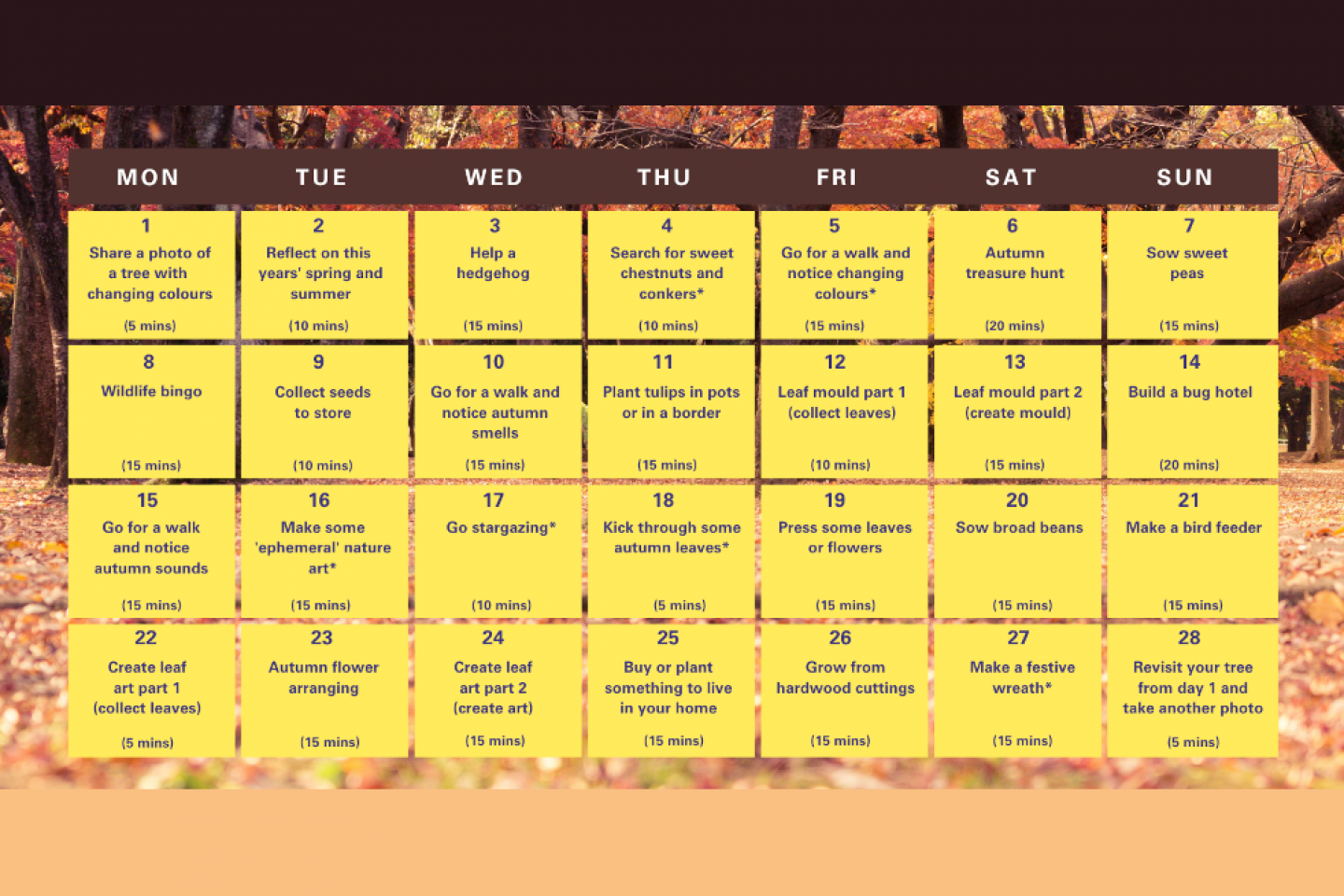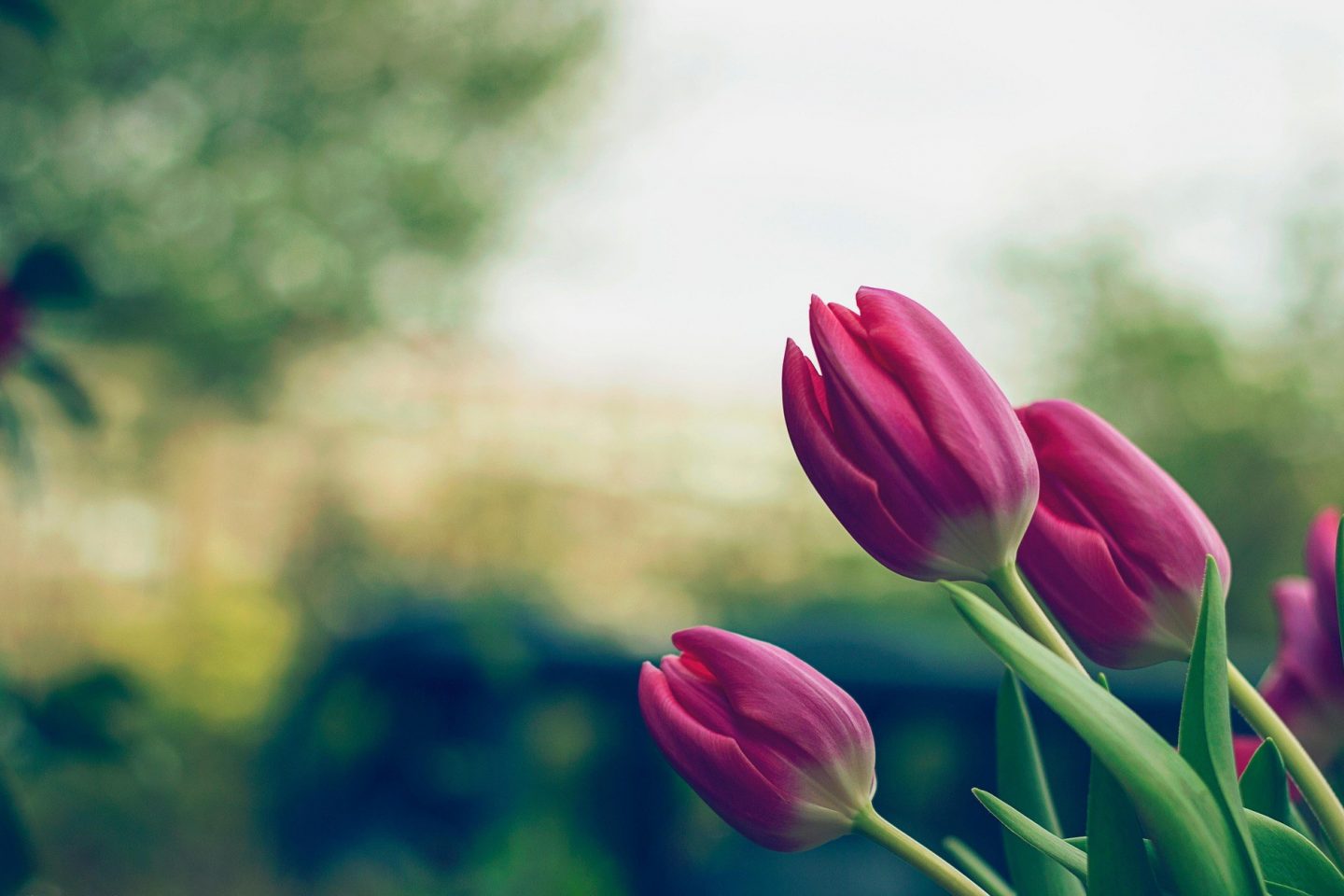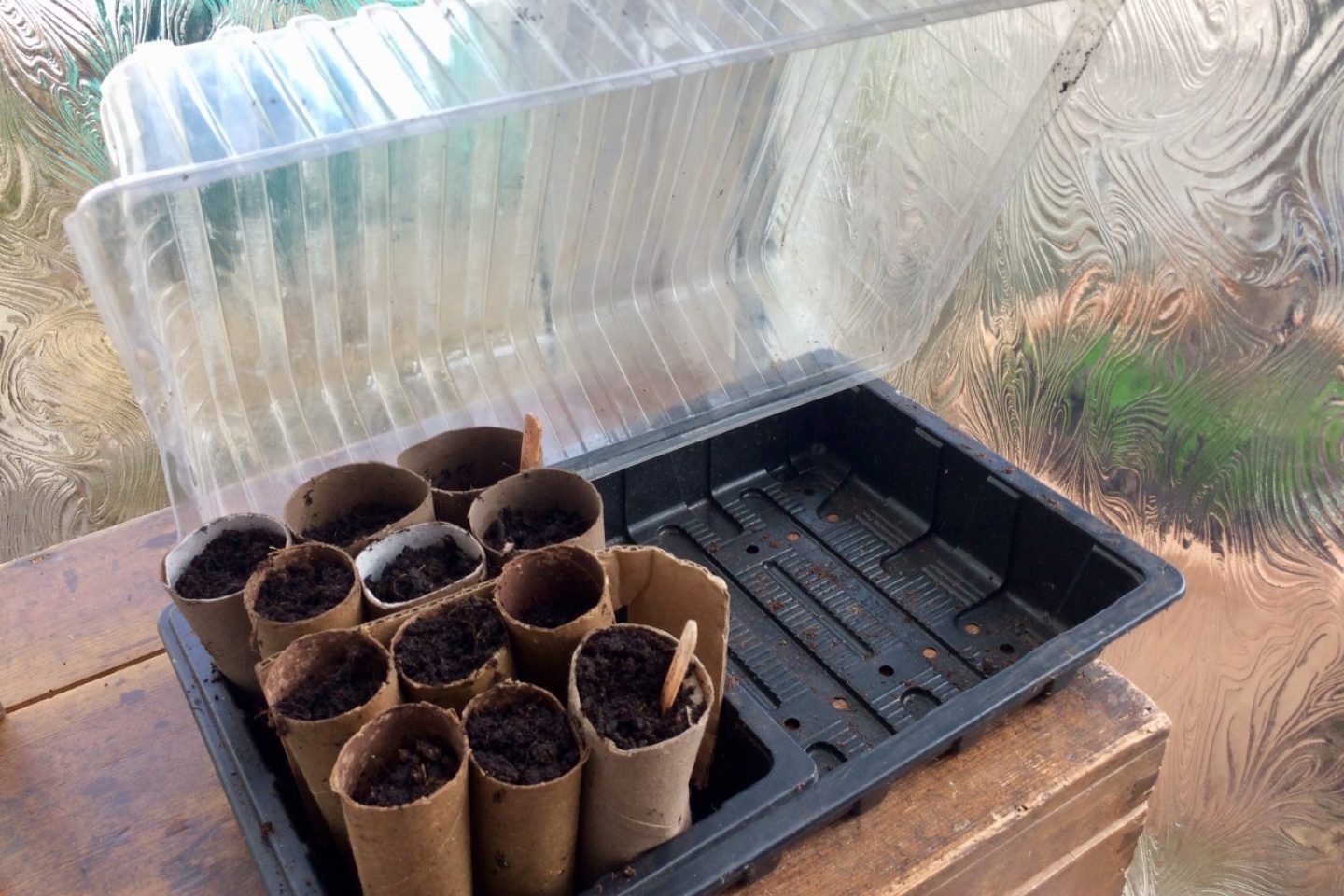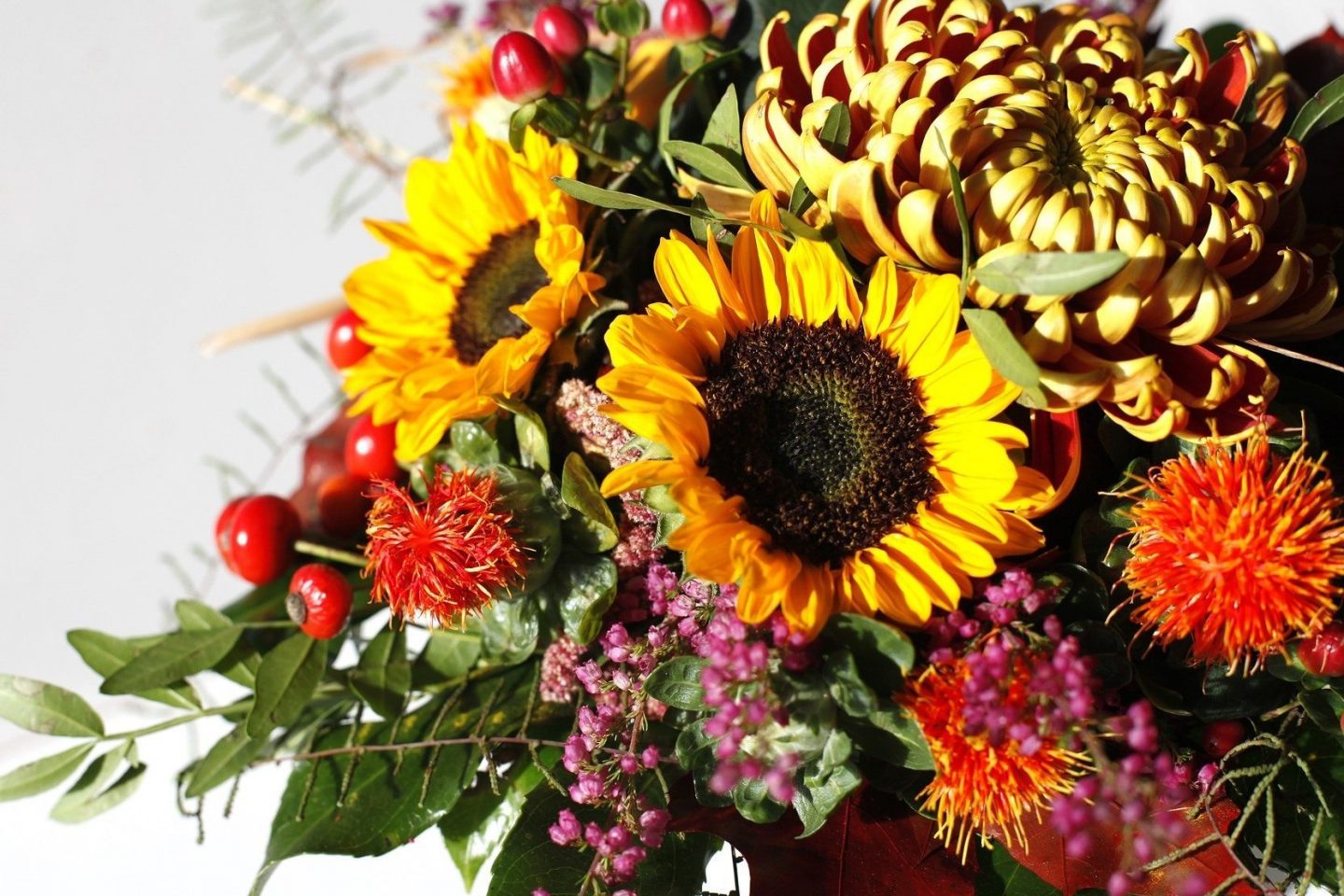Important!
Do you need more urgent support for your mental health and wellbeing? Please access the NHS mental health resources or contact your GP.

We have created a four-week journey of wellbeing activities. Find simple but effective ways to boost your physical and mental health through gardening or time in nature.
You can look forward to a mix of practical, passive, creative, gardening, nature, indoor and outdoor activities. There is something for everyone’s wellbeing and health this autumn.

It’s simple to take part! You can either:
Our activities are spread daily over four weeks. Find a variety of ideas to make you feel good, whatever your age, state of health or abilities. You can take part whether you have a garden, patio, balcony or a windowsill.
Many of the activities are simple and can be done without materials or prep. If you would like some extra support, below we share some tips and ideas for each day, including links to helpful guides.
Do you need more urgent support for your mental health and wellbeing? Please access the NHS mental health resources or contact your GP.




We'd love to hear if the activities are helping you and which ones make you feel good. Let us know how you're getting on by tagging Thrive on Facebook, Twitter or Instagram or emailing us at info@thrive.org.uk.
Do you have a family member or friend who might enjoy this wellbeing calendar? Please do share this page with them and help spread the wellbeing benefits further.
Available now on iOS and Android, helping you garden your way to better health
Find out more